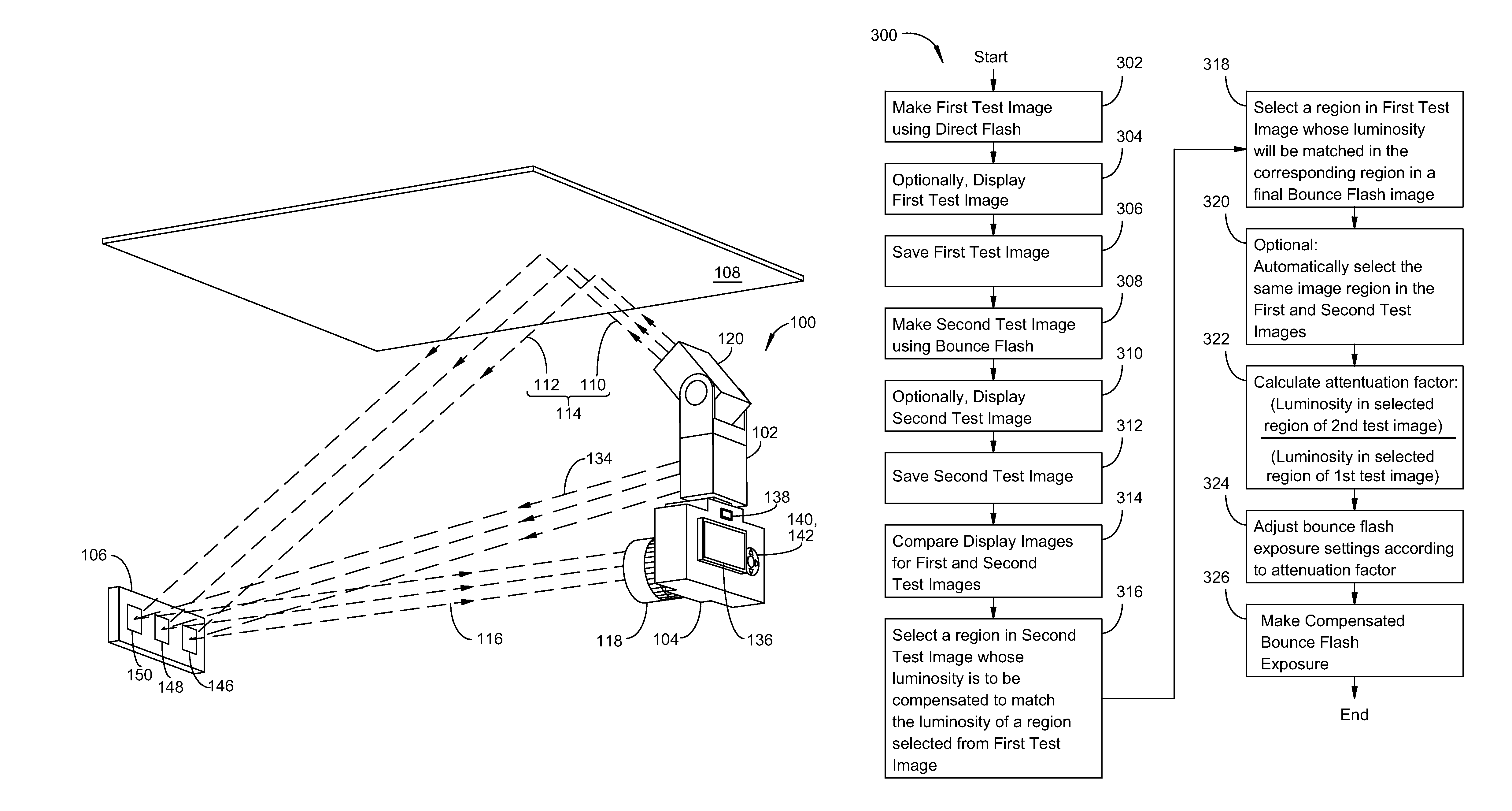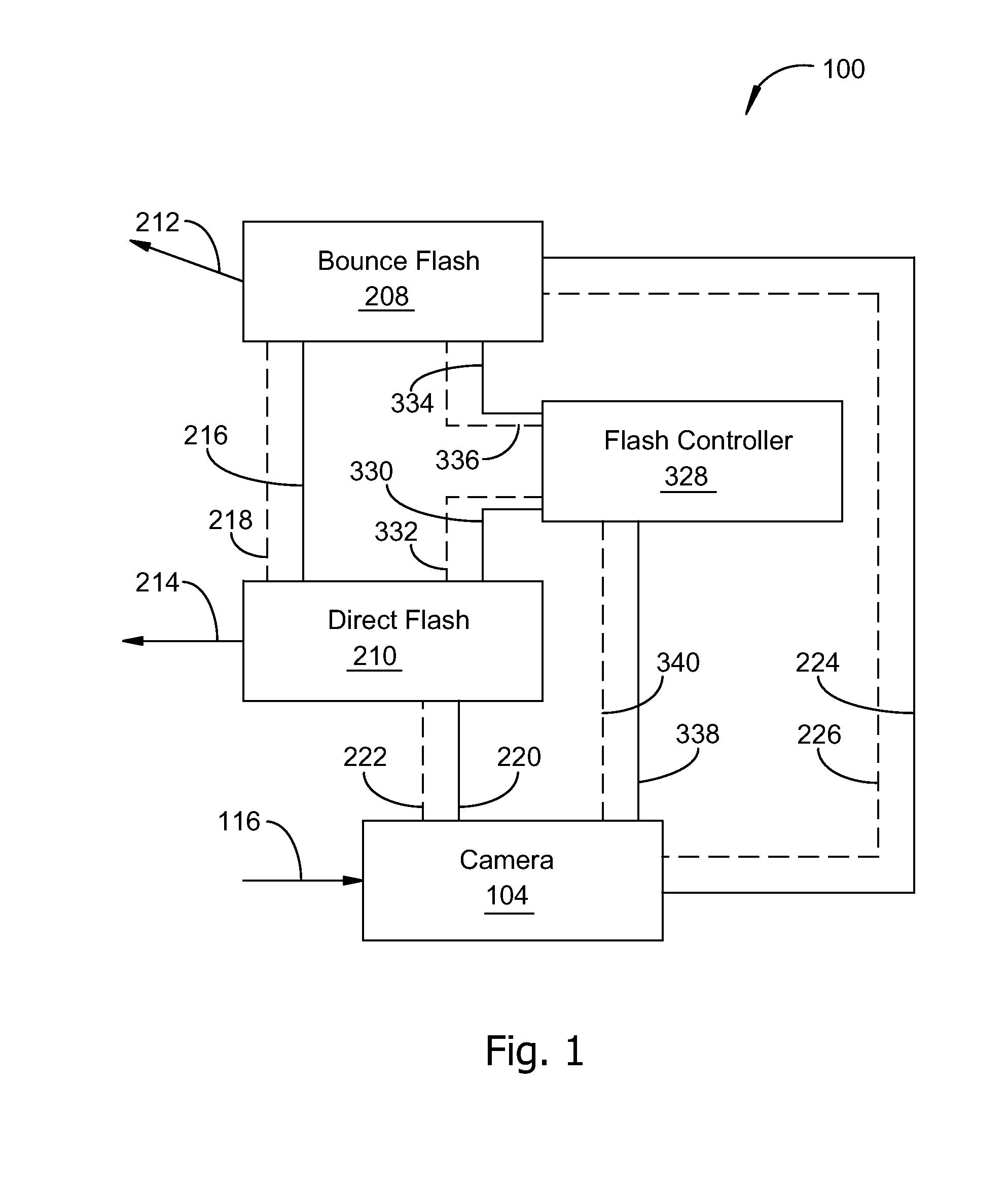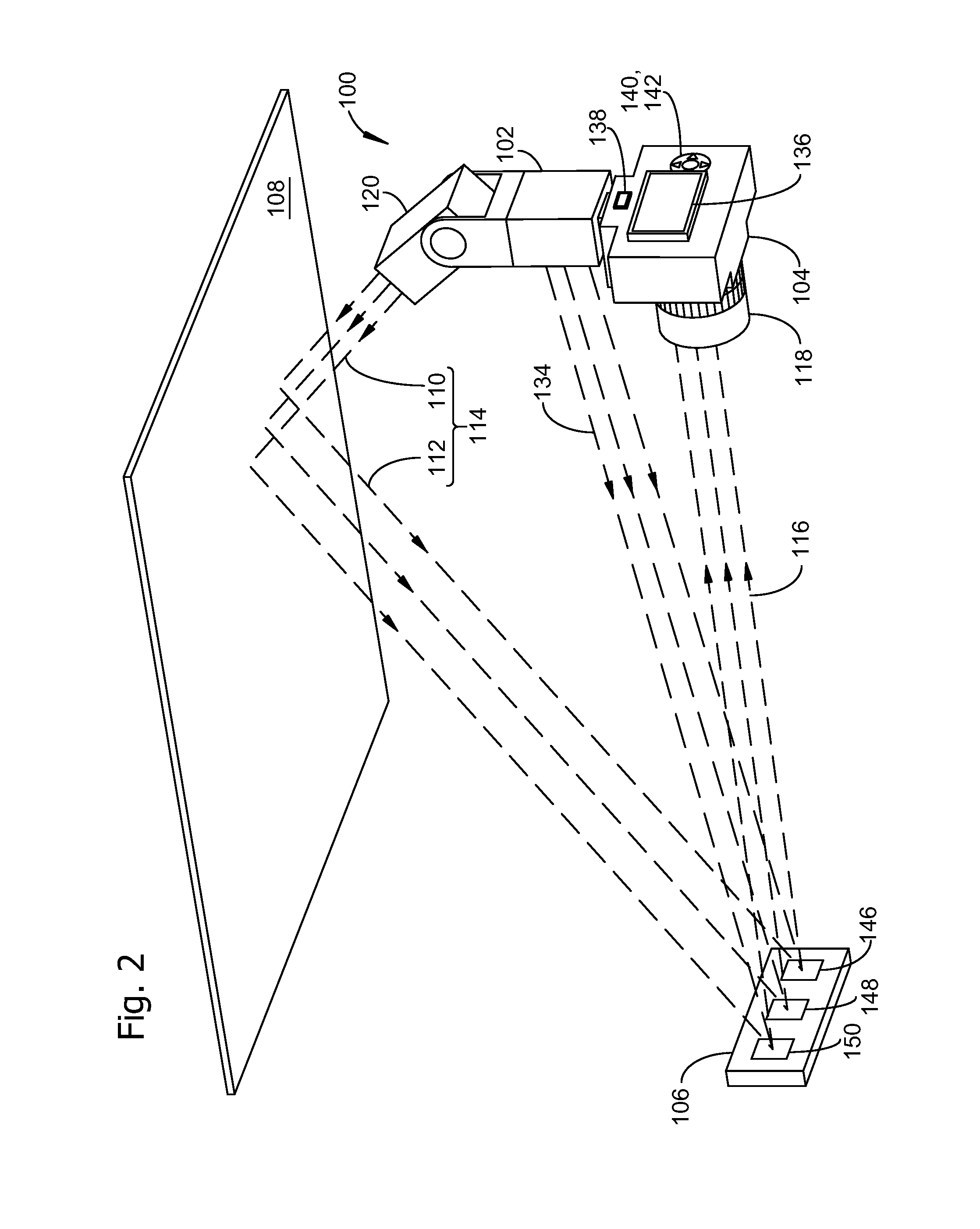Automatic exposure control for flash photography
a technology of automatic exposure control and flash photography, applied in the field of flash photography, can solve the problems of subject detail loss in the underexposed and overexposed areas of the captured image, light areas to be overexposed in the captured image, and dark areas to be underexposed in the final image,
- Summary
- Abstract
- Description
- Claims
- Application Information
AI Technical Summary
Benefits of technology
Problems solved by technology
Method used
Image
Examples
Embodiment Construction
[0024]The following description is made for the purpose of illustrating the general principles of the invention and is not meant to limit the inventive concepts claimed herein. Further, particular features described herein can be used in combination with other described features in each of the various possible combinations and permutations. Unless otherwise specifically defined herein, all terms are to be given their broadest possible interpretation including meanings implied from the specification as well as meanings understood by those skilled in the art and / or as defined in dictionaries, treatises, etc.
[0025]Some embodiments of the invention comprise a flash unit adapted for matching a value of luminosity representing a selected region of an image captured during bounce photography to a value of from luminosities from corresponding regions in a direct flash test image and a bounce flash test image. Some embodiments of the invention comprise a combination of a camera and a flash u...
PUM
 Login to View More
Login to View More Abstract
Description
Claims
Application Information
 Login to View More
Login to View More - R&D
- Intellectual Property
- Life Sciences
- Materials
- Tech Scout
- Unparalleled Data Quality
- Higher Quality Content
- 60% Fewer Hallucinations
Browse by: Latest US Patents, China's latest patents, Technical Efficacy Thesaurus, Application Domain, Technology Topic, Popular Technical Reports.
© 2025 PatSnap. All rights reserved.Legal|Privacy policy|Modern Slavery Act Transparency Statement|Sitemap|About US| Contact US: help@patsnap.com



